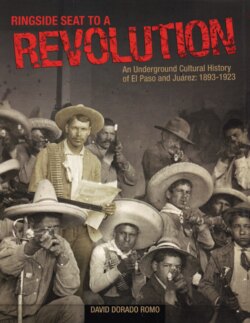Читать книгу Ringside Seat to a Revolution - David Dorado Romo - Страница 50
На сайте Литреса книга снята с продажи.
ОглавлениеTHE ORNITHOPTER AND THE REVOLUTION
hile the Teresista uprising erupted along the U.S.-Mexico border, Victor L. Ochoa
spent his time in jail dreaming about flying machines. He designed the
Ornithopter while he was still locked up at the Kings County Federal Penitentiary
45
W
in Brooklyn, New York. Three months after his release on May 10, 1897, he tried to register it
with the U.S. Patent Office, but it was rejected “on the ground that the apparatus was incapable
of practical use.”
This didn’t discourage Ochoa. He spent two decades trying to get it off the ground. Instead
of returning to the border, where there was still a bounty on his head, he spread a rumor report-
ed in the El Paso newspapers that he had died in an asylum. (He wouldn’t return to El Paso until
1912.) For the next fifteen years, he lived in Poughkeepsie, New York, and Paterson, New Jersey.
The Mexican American revolutionary became a professional inventor. He sold his fountain pen
patent to the Waterman Company, his streetcar brake patent to the American Brake Company
and his pen clip to the American Pen and Pencil Company. He founded the Ochoa Tool and
Machine Company in Delaware to market his adjustable clincher wrench—which he also called
“Ochoa’s Chicken Pliers.” Intending to sell his invention throughout the world, he obtained
patents for his chicken pliers from Czechoslovakia, Great Britain, Spain, Italy, Germany, Japan,
the Netherlands, Belgium, Mexico and the United States. He also convinced several American
